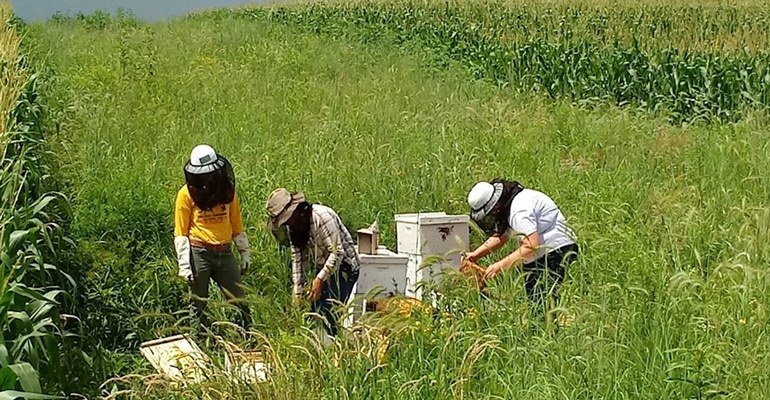June 2, 2020

Over the past two decades, scientists and beekeepers alike have observed drastic declines in bee populations. Iowans who want to do more to help protect bees and provide additional habitat should consider the Conservation Reserve Program.
The federal program, commonly referred to as CRP, has been protecting land and wildlife habitat for 30 years. But more recently, landowners who enroll in this USDA program also have begun taking advantage of protecting pollinators, including honeybees. Entomologist Randall Cass with Iowa State University Extension wrote an article for Acreage Living newsletter to explain how CRP ground can benefit bees.
USDA offers pollinator initiative
CRP formed CP 42, the Pollinator Habitat Initiative. Iowa is a leader in establishing pollinator CP 42 land, with about 42% of the nation’s land in this category coming from Iowa. And according to Cass, there is still room for growth. He says the state is losing its bees at a staggering rate of about 40% to 60% per year. With nearly 5,000 beekeepers in Iowa, that amounts to a big loss. In addition to producing honey, bees are important pollinators for crops and other plants.
“Scientists point to three major stressors that contribute, synergistically, to bee population decline: pesticide exposure, lack of suitable habitat for nesting and foraging, and parasites and pathogens such as the varroa mite,” he says.
CRP land is desirable for pollinators because it is left unfarmed, and in the case of pollinator habitat, it contains a mix of foraging species like wildflowers and flowering legumes. ISU research has shown that honeybees on these sites perform better than when placed near agricultural sites.
Connect landowners, beekeepers
Cass says both the USDA Farm Service Agency and the Natural Resource Conservation Service support access and space for beekeepers to place their hives on CRP land.
According to Cass, it’s important that beekeepers and Iowa landowners understand the opportunity that exists. He says NRCS offices are willing to connect beekeepers with CRP landowners, and landowners can connect with beekeepers by visiting the Iowa Honey Producers Association website to find contact information for a beekeeping club in their area.
More details can be read in the article Keeping Bees in CRP. For more information, Cass can be reached at [email protected] or 515-294-2507. Photos of Iowa bees can be found by following the @iowastatebees Instagram page.
Source: ISU, which is solely responsible for the information provided and is wholly owned by the source. Informa Business Media and all its subsidiaries are not responsible for any of the content in this information asset.
Read more about:
Bee HabitatYou May Also Like




